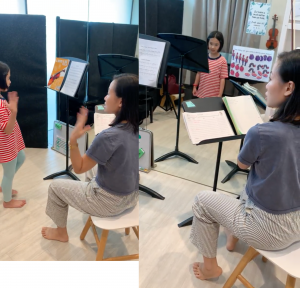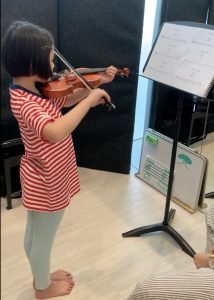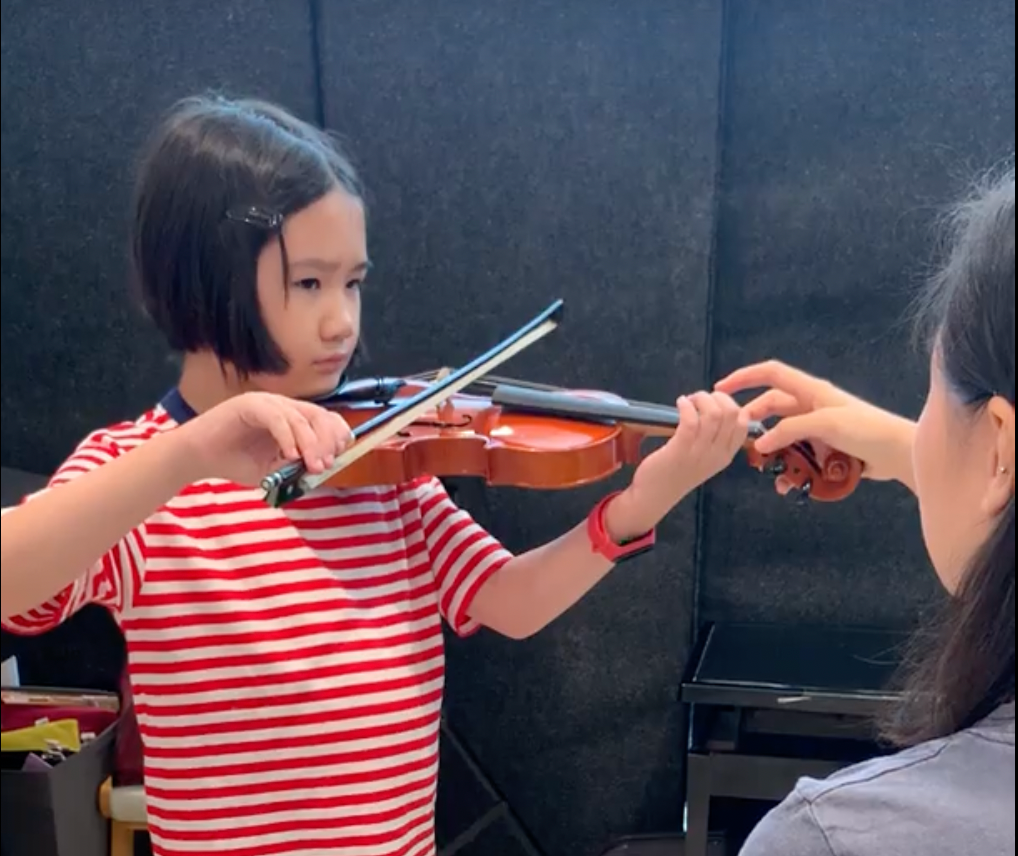At The Music Circle, many people ask us, “What is the Best Way to Learn Music?”.
Our answer is simple – take a long term view, and treat learning music like learning a language, which has a similar progression:
Experience -> Sing or Say -> Identify -> Perform or Create

Experiencing music through music and movement
Children experience language by listening to adults speak amongst themselves and any other engagement an adult might direct at children. Students experience music through listening to all the forms and genres around them, including the sounds of nature and instruments. Another crucial aspect of experiencing which will aid in internalising music is the physical experience through music and movement. Involving the entire body is the most effective way of experiencing music as the mind makes a physical connection with the music a child is listening to, which aids internalisation.

The Student is singing and saying rhythmic notation while moving her feet to the pulse
Sing/Say
When children attempt to speak, they start to babble. In the same way, music students need to learn to sing before performing an instrument . Students can sing in various ways and it would be best for them to be exposed to singing lyrics, note names as well as solfège.
The understanding of the relationship between rhythm and pulse is also made through coupling the speaking of rhythmic syllables with movement of pulse and/or rhythms.
Experiencing and listening to music through music and movement as well as singing and saying rhythmic syllables all help to build a child’s musical vocabulary. Just as we need to build a vocabulary for language, the wider and deeper a child’s musical vocabulary is, the greater the potential to go further in their musical journey.

Identifying Music Visually through Notation
Identify
To learn how to read, children start to identify sounds, syllables and words they have heard, blabbered or spoken. Making this identification helps them to read much faster. In the same vein, when music students have experienced a wide range of music and are able to sing and say rhythmic syllables, they are able to identify these aspects in music visually through notation, as well as aurally.

Performing a Piece she’s learnt
Perform/Create
Once students are able to sing music, and have a strong sense of pulse and rhythms, they will be able to compose music, improvise as well as perform any repertoire more effortlessly.
For a violinist, teaching technique separately from music and movement may lead to a longer initial journey. However, as all these aspects are well-developed and start to meld together, a child will be able to progress very quickly and effectively.
Find out more about The Music Circle’s music lessons. Call us for a consultation and we will be happy to help introduce your child to the wonderful world of music! Call or Whatsapp +6590683878.


